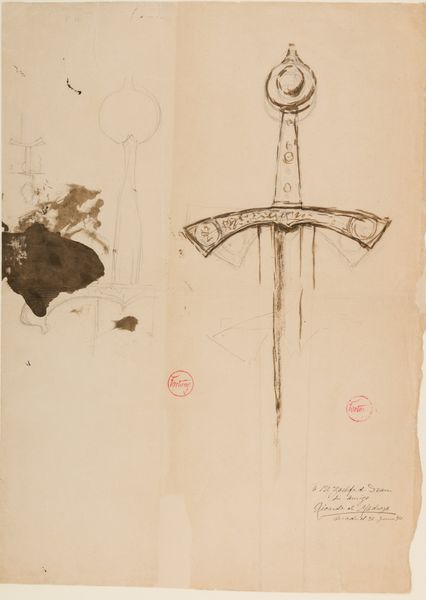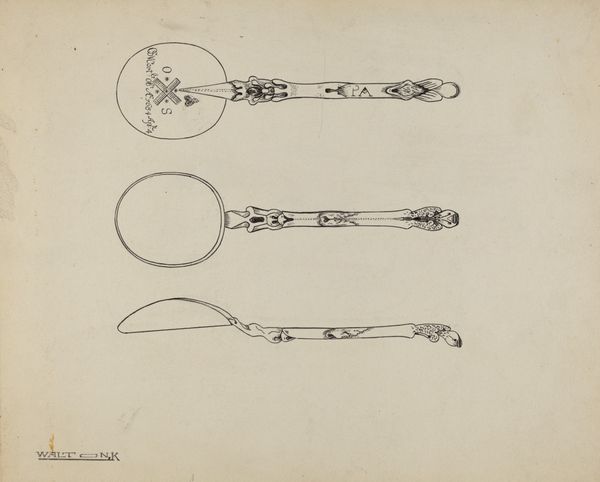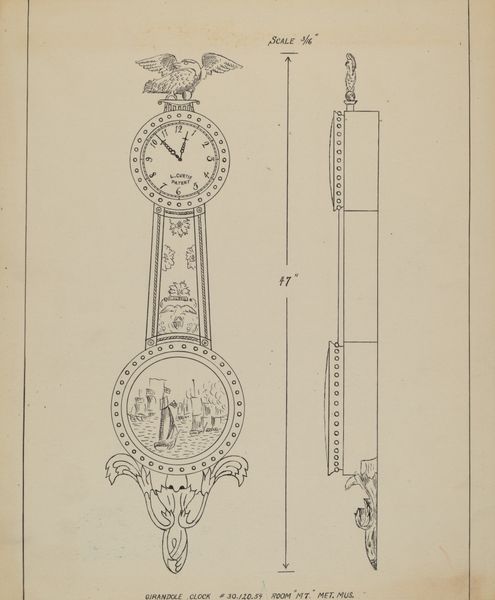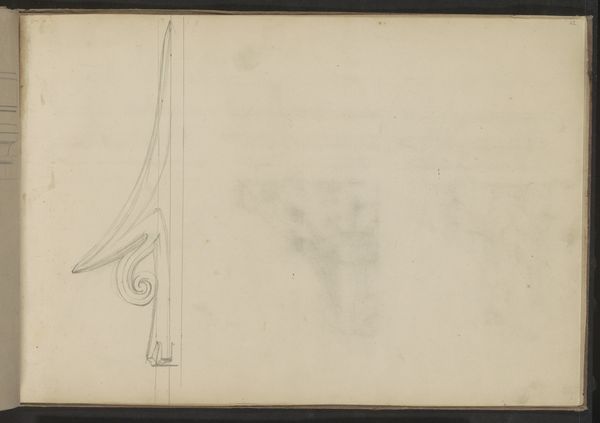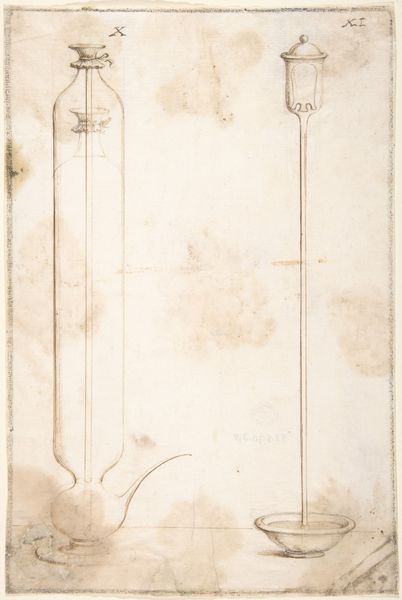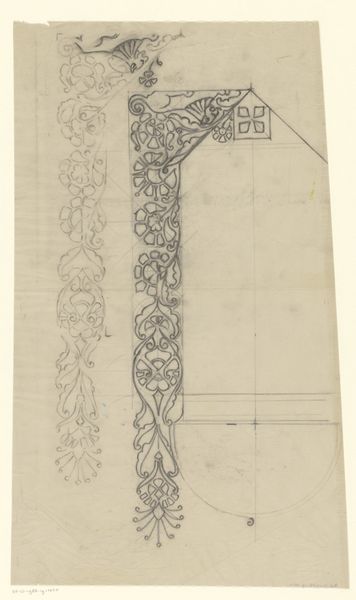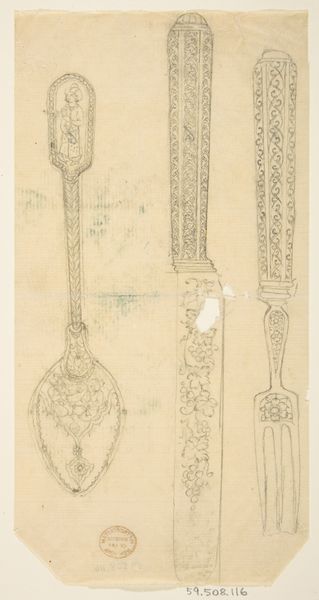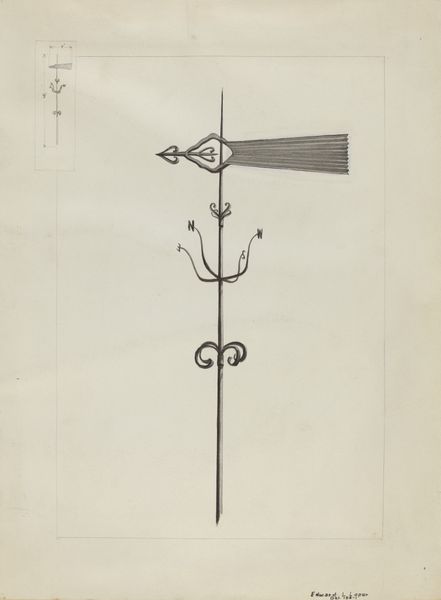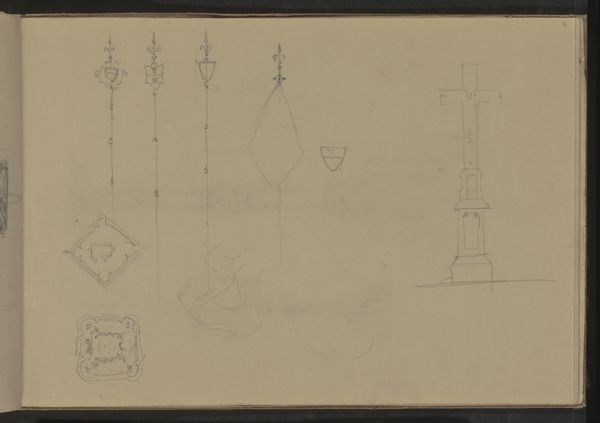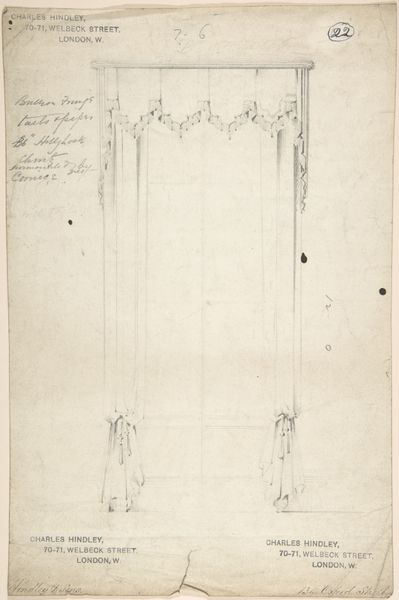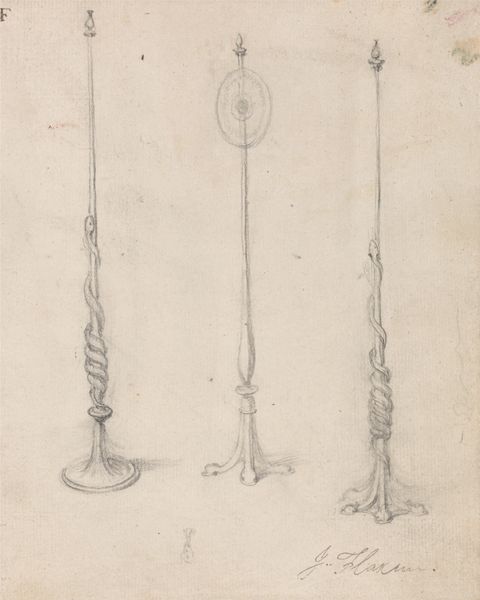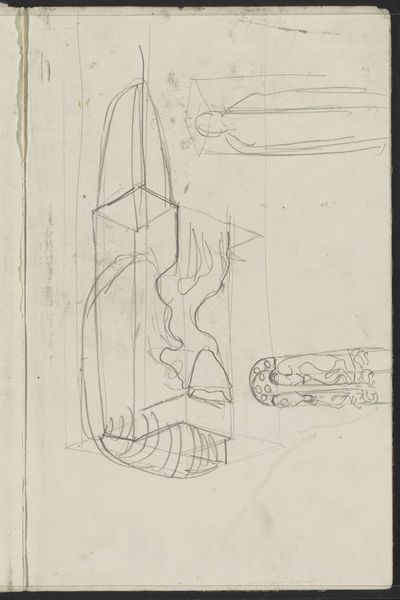
drawing, metal, paper, pencil, engraving
#
drawing
#
metal
#
etching
#
paper
#
pencil
#
united-states
#
history-painting
#
armor
#
engraving
#
sword
Dimensions: 20 1/16 x 18 3/16 in. (50.9 x 46.1 cm)
Copyright: Public Domain
Curator: We're looking at "Design for an Officer's Sword" by Thomas Fletcher, created around 1837. It’s currently held at the Metropolitan Museum of Art. The work is made from pencil, etching and engraving on paper. Editor: My first thought is of elegance and intent, almost foreboding despite its delicacy as a drawing. There’s something unnerving about seeing such a weapon rendered so meticulously, stripped of the drama of actual use. Curator: What strikes me is Fletcher's meticulous process. He was designing not just an object, but an aspirational symbol—a form of social communication forged in metal and etched on paper. It forces us to ask about labor; Who designed, who made and who owned such a piece. The division of the work gives me pause. Editor: It's fascinating how Fletcher integrates visual motifs. The eagle, a very common symbol of power and authority in this era, is so prominent on the hilt, above what looks like other classical emblems worked into the design of the guard. I wonder, would the original owner have chosen this design for themselves or did Fletcher suggest it to make the product that much more appealing to his clients? Curator: It would be important to find other Fletcher products from the time and compare them to known inventories and purchase records, in order to try and get at this kind of data about the design. Think of the political undertones—each of these design features had market value. A value often determined through access and the cultural capital these visual signs signified in early America. Editor: Absolutely. It speaks to the psychological weight attached to these symbols. Think of the anchors—maritime prowess, stability. How they're meant to evoke a sense of pride and nation. There's almost a formula at play here. One wonders how the elite would have perceived a contemporary visual interpretation of this artifact. Curator: It underscores how entwined artistic skill and material aspiration were back then. The sword represents both a craft object made with care and an indication of hierarchy. Without looking at the materials we lack the social data needed to complete the piece, at least for me. Editor: And, for me, this shows how enduring symbols are woven into even everyday objects—they are anything *but* mundane, as cultural cues they communicate so much about history, ambition, and identity. Curator: Exactly, now if we knew more about the shop where it was designed… Editor: Or where its symbols may appear elsewhere!
Comments
No comments
Be the first to comment and join the conversation on the ultimate creative platform.
